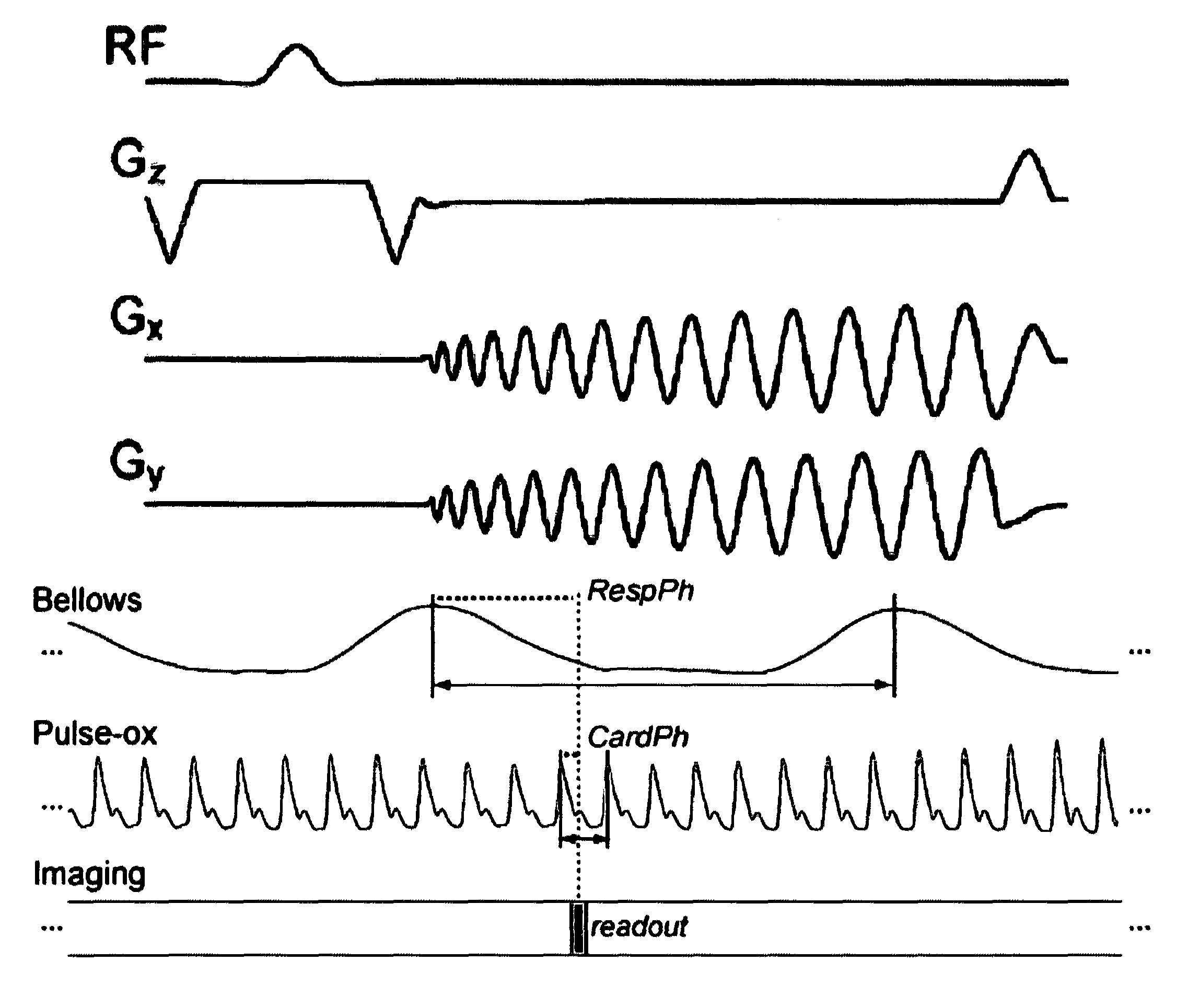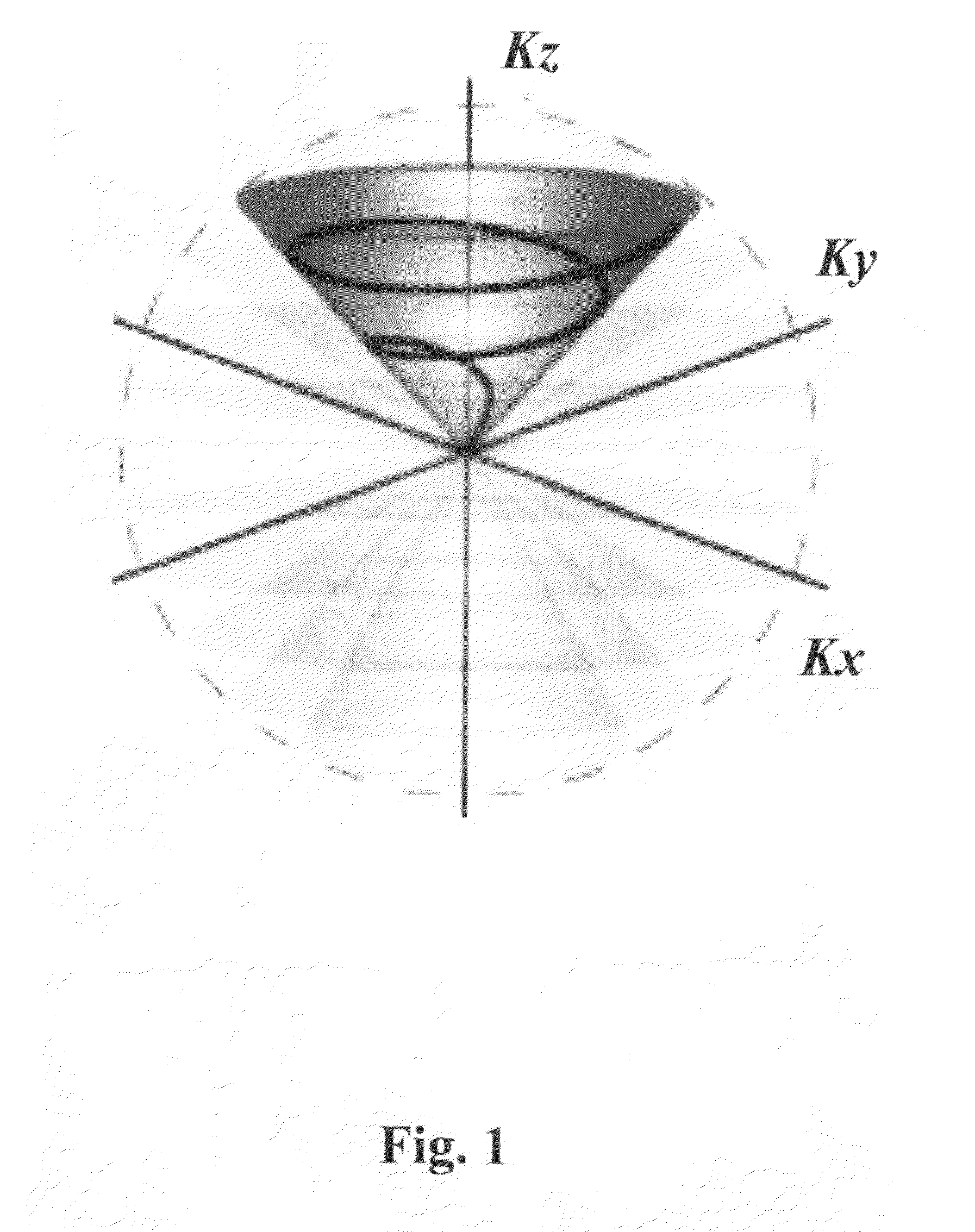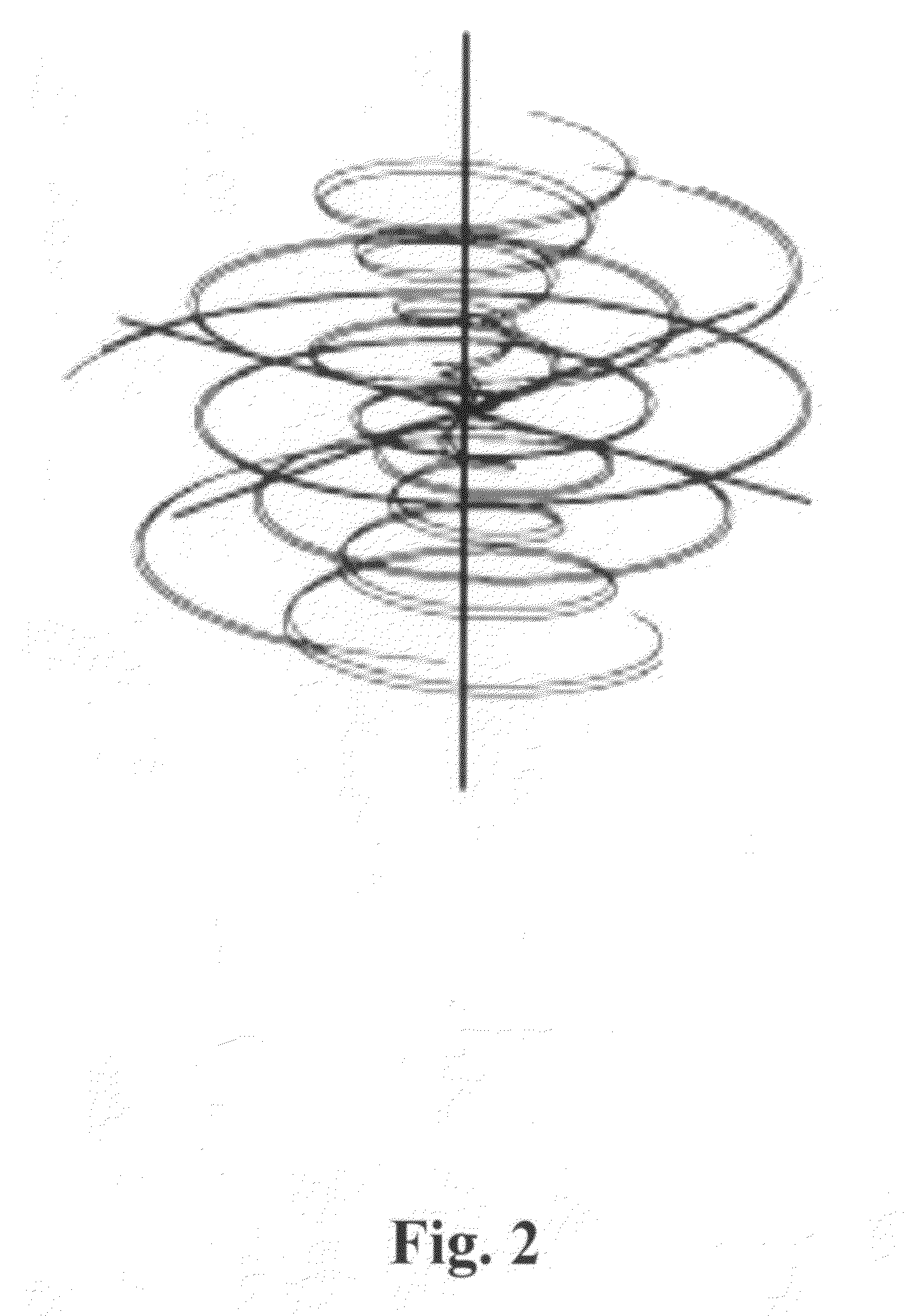Multi-dimensional cardiac and respiratory imaging with MRI
a multi-dimensional cardiac and respiratory imaging technology, applied in the field of multi-dimensional cardiac imaging methods and systems, can solve the problems of “corrupt patient datasets” and inadequate current non-invasive diagnostic techniques, and achieve the effects of improving robustness to motion/flow effects, robustness to missing data points, and high scan acceleration
- Summary
- Abstract
- Description
- Claims
- Application Information
AI Technical Summary
Benefits of technology
Problems solved by technology
Method used
Image
Examples
example
1. General Time-resolved Volumetric Acquisition
Acquisition
[0034]a. Continuous steady-state acquisition.
[0035]b. Use the 3D cones for spatial encoding.
[0036]c. Optional magnetization-preparation modules inserted for encoding of flow, diffusion, chemical shift, or other functional information.
[0037]d. Cardiac and respiratory information concurrently recorded during the scan from standard monitoring devices (ECG, pulse-ox, bellows) and / or MRI navigator signals.
[0038]e. Scan time reduction using multiple receiver elements.
Reconstruction
[0039]a. Retrospective synchronization of acquired anatomic / functional data to physiologic temporal phases (cardiac / respiratory phase).
[0040]b. Reconstruction of an entire volumetric and / or functional dataset for each desired temporal phase.
Processing and Display
[0041]a. Slice-by-slice or volume-rendered display of the 3D morphology as a temporal sequence with respect to cardiac motion at each stage of the respiratory cycle; a plot of the measured atrial / ...
PUM
 Login to View More
Login to View More Abstract
Description
Claims
Application Information
 Login to View More
Login to View More - R&D
- Intellectual Property
- Life Sciences
- Materials
- Tech Scout
- Unparalleled Data Quality
- Higher Quality Content
- 60% Fewer Hallucinations
Browse by: Latest US Patents, China's latest patents, Technical Efficacy Thesaurus, Application Domain, Technology Topic, Popular Technical Reports.
© 2025 PatSnap. All rights reserved.Legal|Privacy policy|Modern Slavery Act Transparency Statement|Sitemap|About US| Contact US: help@patsnap.com



